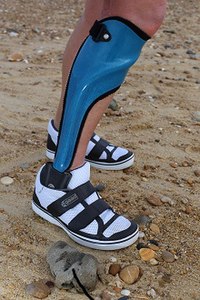
Photo from wikipedia
Functional magnetic resonance imaging (fMRI) is a widely used technique for assessing brain function in both healthy and pathological populations. Some factors, such as motion, physiological noise and lesion presence,… Click to show full abstract
Functional magnetic resonance imaging (fMRI) is a widely used technique for assessing brain function in both healthy and pathological populations. Some factors, such as motion, physiological noise and lesion presence, can contribute to signal change and confound the fMRI data, but fMRI data processing techniques have been developed to correct for these confounding effects. Fifteen spastic subacute stroke patients underwent fMRI while performing a highly controlled task (i.e. passive extension of their affected and unaffected wrists). We investigated the impact on activation maps of lesion masking during preprocessing and first- and second-level analyses, and of adding wrist extension amplitudes and physiological data as regressors using the Statistical Parametric Mapping toolbox (SPM12). We observed a significant decrease in sensorimotor region activation after the addition of lesion masks and movement/physiological regressors during the processing of stroke patients’ fMRI data. Our results demonstrate that:• The unified segmentation routine results in good normalization accuracy when dealing with stroke lesions regardless of their size;• Adding a group lesion mask during the second-level analysis seems to be a suitable option when none of the patients have lesions in target regions. Otherwise, no masking is acceptable;• Movement amplitude is a significant contributor to the sensorimotor activation observed during passive wrist extension in spastic stroke patients;• Movement features and physiological noise are relevant factors when interpreting for sensorimotor activation in studies of the motor system in patients with brain lesions. They can be added as nuisance covariates during large patient groups’ analyses.
Journal Title: MethodsX
Year Published: 2020
Link to full text (if available)
Share on Social Media: Sign Up to like & get
recommendations!